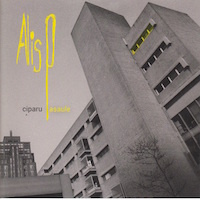Readers of this portal who have been following news in Latvia will know that for some time now, one of the more passionately (and quite often ridiculously) debated issues in this country has been the European refugee crisis and, specifically, the fact that all European Union (EU) member states are expected to take in their share of the people who have been flooding across the EU’s borders in record numbers in recent times. More nationalistically inclined members of our society have occasionally gone to fairly hysterical extremes in opposing the whole idea — the refugees might be terrorists! They might bring unknown and scary diseases to our country! Bring in one, and he will bring in his whole extended family, and soon we will be overrun by foreigners! Latvia and Latvians are in danger! The white race is in danger! (This last claim, which is beyond ludicrous on the face of it, really did appear on a few posters at a demonstration that was held a month or two ago to say “no” to refugees as such.)
The truth is, of course, that Latvia is not being asked to accept thousands upon thousands of refugees. The truth is that right now the expected number is 776, or 0.00038% of the country’s two million or so residents. Clearly that is not a number that will in any sense destroy the nation or its people. Yes, if the chaos in the Middle East continues unchecked (and now that Russia has made it clear that it is going to take part in the process without any checks or balances whatsoever, it is likely that it will continue unchecked for some time to come), there may be greater numbers of refugees whom Latvia is asked to accept, but even then it will not be millions.
There are several aspects to consider here. First of all, it is clear that not everyone who is crossing the Mediterranean or using a land route to get to Europe is fleeing for his or her life. Plenty of people are simply looking for a better life for themselves, and they are people who are classified as “economic migrants” and, therefore, not worthy of the status of true refugees. Thus, for instance, European countries have busily been sending back home migrants from places like Kosovo, where yes, life is probably rough, but no one is threatened by the kind of annihilation that we are seeing in Syria and the Middle East in a broader sense. That said, I do believe that there is a moral obligation to take in anyone, and let me say again — anyone who manages to escape a territory that is currently being controlled by the so-called “Islamic State.” That is a group of terrorists that goes completely beyond the pale, slaughtering anyone who does not comply with its very narrowly drawn understanding of what “proper” religion is. Residents of those areas have reason to flee, and there is every reason to believe that they should be given sanctuary. Yes, there is the consideration that those who are getting into rickety boats for the perilous crossing of the Mediterranean have chosen not to move to refugee camps in Syria’s neighboring countries, instead looking toward Europe as purely a better place to live, but in this case, that should not make much difference.
As to Latvia’s situation, despite what some foolish populists have been claiming, the government has drawn up fairly specific plans about what to do when the refugees start arriving, probably in December or January. They will first be placed in a refugee center at a place called Mucenieki, which is being expanded and renovated for that purpose. There they will stay until their status is determined. If it is found that they are truly refugees, they will be granted the relevant status, and after the three months are up, they will be released from the center and told to make their own way in life. During the process, refugees will receive subsidies from the government to cover basic needs. They will be stingy subsidies, the government having yielded before pressure from those who point out that the initially planned monthly stipend was rather much higher than the old-age pensions that many people in Latvia receive, and the sum has been cut even before the first refugee has arrived, but money will be made available for that purpose nonetheless.
What kinds of people can we expect? Well, first of all, it is not the case that all of those who are fleeing the Middle East are of the “unwashed and poor” variety of which America’s Statue of Liberty speaks. A survey that was released this week shows that plenty of them have completed a high school or university education. Latvians should understand this. Back in the 1940s, many of those who fled to the West in the face of a second Soviet invasion were members of the intelligentsia. It is specifically for that reason that at the so-called “displaced persons” camps in Germany where most of them first ended up, Latvians could set up schools, theatrical companies, opera troupes, etc. Throughout the Western world, Latvians organized social and political organizations, Saturday, Sunday and summer schools, song festivals, churches, and so on. That would not have been possible if everyone who left Latvia had been uneducated. The same is true of Syrians and Iraqis who are currently running for their lives.
One fact in all of this is that because of fairly massive emigration of Latvia’s residents to England, Ireland and other Western European countries (and here let us be perfectly clear that in every single case, these are “economic migrants” in the direct sense of the words), lots of businesses in Latvia have problems finding workers. On my television show a month or so ago, a sculptor called Ivars Drulle said that he would happily hire three or four refugees to help out at his farm – cut down bushes, help repair the barn, and so on. He said that his neighbor is a car mechanic who has been utterly unable to find anyone who can come and help out. Perhaps among the Syrians there might be someone who knows a thing or two about automobiles. Or putting up a barn. Or, in the case of the Ķekava poultry factory, which has also said that it needs workers, handling chickens and eggs.
Of course, it is unlikely that Latvia is the dream destination for most of the current refugees. Ours is not a rich country, we do not have anything close to the social care system that exists in Scandinavia and elsewhere, our winters can be nasty. Those who say that nearly all of the refugees actually want to move to Germany, Sweden, or some other comparatively rich country are right. The thing is, however, that the distribution system that the EU has cooked up about this says that those who are sent to Latvia are going to have to stay in Latvia at least for a year or two. If they are found elsewhere in the EU, they will be shipped back to Latvia. And that, in turn, means that the real issue here is how the people of Latvia will receive these poor unfortunates.
It was a decade or more ago that a group of Somalians turned up in Latvia. They spent their three months and Mucenieki, and then they were basically thrown out into the streets. It was their enormous good fortune to run into a woman who knew the saintly Reverend Juris Cālītis, who recently retired as pastor of St Savior’s English Congregation in Riga. He personally took the Somalis in at the home that he runs in Latvia’s countryside for abused children. He personally contacted hotel owners and others to say that he had these Somalis, and could the businesspeople find work for them? Today, one of the Somalis has died, but the others have learned Latvian and have become a part of this country’s society. It was the personal touch that allowed them to do so.
There is also evidence that there really are people who are happy to make new lives for themselves in Latvia. A couple of weeks ago there was a report in a newspaper in which a young man from Iraq at Mucenieki said that he really wants to get to work, he’s prepared to do any job at all, and all that he needs is for the government to grant him the appropriate status. Another newspaper report was about Vietnamese and Chinese people who are in Latvia because they bought real estate here and thus qualified for a residency permit in return for their investment. The Asians talked about how they were working hard to learn Latvian, one Vietnamese woman saying that she wants to become a “Latvian woman” as soon as possible, even though the Latvian language is not the easiest one in the world to learn. In another interview, a Vietnamese man who has been living here for some time and has become so familiar with the Latvian world that he has drawn comic books about the legendary hero Lāčplēsis, said that he, too, likes living here, though every winter he decamps back to Vietnam for a couple of months because it’s just too darn cold here.
So the bottom line here is that there is no real reason to fear the refugees. Latvia has never been a mono-ethnic country, there have always been others here. If the country and nation managed to survive 50 years of Soviet occupation and the relevant mass influx of people from the “brotherly” Soviet republics, then surely it can survive 776 desperate people from the Middle East. All that is needed to understand that they are not some amorphous mass. They are all people just like us, with their own hopes and dreams and aspirations. It would be terrible to simply turn them away.
Kārlis Streips was born in Chicago, studied journalism at the University of North Illinois and University of Maryland. He moved to Latvia in 1991 where he has worked as a TV and radio journalist. He also works as a translator and lecturer at the University of Latvia.






